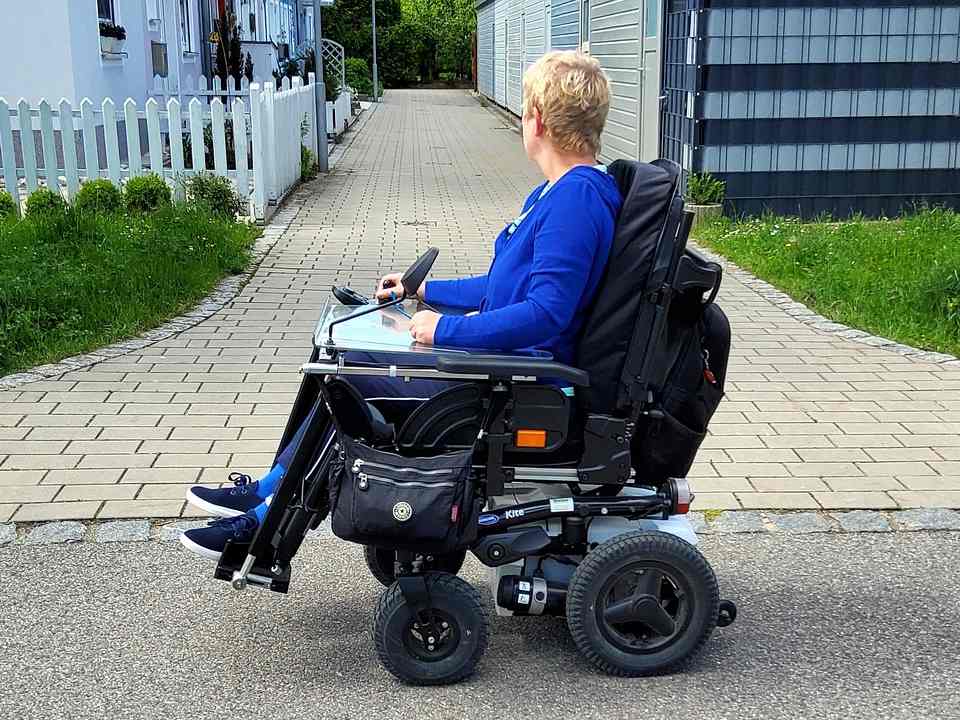Choosing the right wheelchair is crucial for ensuring comfort, mobility, and independence for the user. Whether you're looking for a wheelchair for yourself or others, it's important to consider various factors to make a decision. This guide will introduce the different types of wheelchairs, how to choose the right one, and important considerations for safe use.
Types of Wheelchairs
There are two main types of wheelchairs: manual wheelchairs and electric wheelchairs.

Manual Wheelchairs
Manual wheelchairs are hand pushed by the user or an attendant. They are typically lighter and more affordable than electric wheelchairs, no need for batteries or charging and easier to maintain, making them a popular choice for those who have the upper body strength to control them. However, it may not be suitable for long distances or rough terrain, and also relies on upper body strength or assistance. Furthermore, manual wheelchairs have limited customizable options compared to electric wheelchairs.

Electric Wheelchairs
Electric wheelchairs, also known as power wheelchairs, are powered by batteries and can be controlled using a joystick or other interface. It is easier to operate for users who cannot propel themselves manually due to limited strength or mobility. They are suitable for different terrains, depending on the models, and can cover longer distances without physical exertion. Additionally, electric wheelchairs are highly customizable like reclining seats, adjustable footrests, and various control options. But, they are more expensive than manual wheelchairs, heavier and larger, inconvenient to transport. Regular charging and maintenance of batteries are needed.
How to Choose the Right Wheelchair
Choosing the right wheelchair depends on several factors, including the user's physical condition, lifestyle, and preferences.
1. Assess the User's Physical Needs
Mobility and Strength: If the user has sufficient upper body strength and dexterity, a manual wheelchair might be suitable. For those with limited mobility or strength, an electric wheelchair is the better option.
Posture Support: Some users need additional support for their posture. Looking for wheelchairs with adjustable backrests, footrests, cushions, and other functions that can provide the necessary support.
Size and Weight: Ensure that the wheelchair fits the user's body size and weight. Considering the seat width, depth, and height, as well as the loading capacity of the wheelchair.
2. Consider the User's Environment
Indoor vs. Outdoor Use: If the wheelchair will mainly be used indoors, a smaller, highly mobile model may be best. For outdoor use or moving on rough terrain, a more robust wheelchair with larger wheels and good suspension might be necessary.
Transportation: If the wheelchair needs to be transported frequently, consider how easily the wheelchair can be folded or disassembled, and whether the wheelchair will fit in your car.
3. Evaluate the User's Lifestyle
Considering the user's daily activities. For active users, a wheelchair with more advanced functions and customization options might be necessary. Manual wheelchairs offer more independence for users who can propel themselves, while electric wheelchairs are better for those who need assistance.
4. Budget Considerations
Wheelchairs vary greatly in price, depending on the type, functions, and customization options. It's important to balance the user's needs with the available budget. Insurance coverage and financial assistance programs may also be available to help offset costs.
Wheelchair Safety and Maintenance
Once you've chosen the right wheelchair, it's important to ensure wheelchair's safe and effective use.
Safety Tips
Proper Use: Ensure that the user is trained on how to use the wheelchair safely, including how to navigate ramps, curbs, and uneven surfaces.
Regular Inspection: Checking the wheelchair regularly for any signs of wear and tear, such as loose bolts, worn-out tires, or malfunctioning brakes.
Weight Limit: Never exceed the wheelchair's weight limit, as this can compromise its safety and stability.
Battery Maintenance: For electric wheelchairs, ensure that the batteries are charged regularly and replaced as needed.
Maintenance Tips
Cleaning: Regularly clean the wheelchair to prevent dirt and debris from causing damage. Using mild soap and water for the frame and a vacuum for the cushions.
Lubrication: Keep moving parts like the wheels and axles well-lubricated to ensure smooth operation.
Tire Care: Checking the tire pressure and tread regularly, and replace tires if they show signs of wear.
Conclusion
Choosing the right wheelchair requires careful consideration of the user's physical needs, environment, and lifestyle. By taking the time to evaluate these factors, you can select a wheelchair that enhances mobility, comfort, and quality of life. Remember to prioritize safety and regular maintenance to ensure the wheelchair remains in good condition and provides reliable support in the future.


